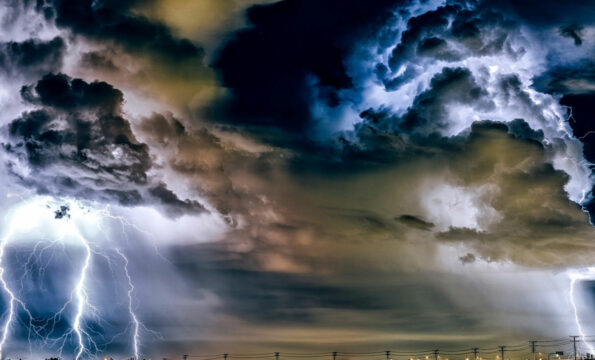Las academias nacionales de ciencias de Europa afirman que la Tierra ha experimentado un aumento de cuatro veces en los principales eventos de inundaciones, y una duplicación de tormentas, sequías y olas de calor significativas desde 1980.
En Europa, donde los datos precisos se remontan a décadas atrás, el número de inundaciones severas se ha quintuplicado desde 1995, según el informe, que actualiza una evaluación de 2013.
«Ha habido, y continúa existiendo, un aumento significativo en la frecuencia de eventos climáticos extremos», dijo Michael Norton, director de programas ambientales para el Consejo Asesor de Ciencias de las Academias Europeas. «Estos subrayan la importancia de evitar los gases de efecto invernadero, los cuales son fundamentalmente responsables de impulsar estos cambios», dijo.
En Europa, los esfuerzos realizados para fortalecer las defensas contra las inundaciones fluviales han demostrado su eficacia: a pesar de un aumento en la frecuencia de tales eventos, las pérdidas económicas en el continente se han mantenido estables.
«En lugar de simplemente hacer frente a los desastres después de que han ocurrido, realizamos una gestión proactiva de todos los conductores de riesgos», comentó la directora de la Iniciativa del Seguro Climático de Múnich, Soenke Kreft.
Por el contrario, en los Estados Unidos, el daño causado por las tormentas se duplicó. Ha pasado a un promedio de $10 mil millones en 1980 a $20 mil millones en 2015, cifras ajustadas según la inflación.
El debilitamiento de la Corriente del Golfo «es ahora una hipótesis creíble», dijo Norton. Los científicos han estimado que los inviernos en Gran Bretaña y gran parte de Europa occidental pueden llegar a ser varios grados centígrados más fríos si la Corriente del Golfo comienza a disminuir.
«Algunos de los factores subyacentes del clima extremo que eran especulativos hace cuatro años, hoy parecen menos especulativos». La posibilidad de que la Corriente del Golfo, también conocida como Circulación de Volteo Meridional del Atlántico (AMOC, por sus siglas en inglés), se debilite o se cierre por completo, «debe tomarse como una posibilidad seria», agregó.
Los científicos han estimado que los inviernos en Gran Bretaña y gran parte de Europa occidental serían varios grados centígrados más fríos en tal escenario.
También los científicos han examinado las interrupciones recientes de la corriente polar en chorro, una banda de vientos del oeste al este que circulan a la velocidad del tren bala a unos 10 kilómetros sobre la superficie de la Tierra en el límite superior de la troposfera. Investigaciones recientes han vinculado los inviernos severos en América del Norte y Europa, así como un clima extremo del verano, a las fluctuaciones de la corriente de chorro en el Ártico, donde las temperaturas han aumentado dos veces más rápido que en todo el planeta.
«…Ha habido aproximadamente diez veces más temperaturas cálidas récord que frías en los últimos 150 años». Las predicciones recientes sugieren que a mediados de siglo, algunas partes del sur de Europa enfrentarán al menos un riesgo climático severo cada año de la escala que ahora ocurre una vez cada 100 años.
Para el año 2100, de acuerdo con estas predicciones, toda la costa mediterránea de Europa enfrentará anualmente sequías extremas, inundaciones costeras u olas de calor. Y unos pocos «puntos calientes» se verán afectados cada año por dos o más de esos peligros que rara vez ocurrían hace cien años, los cuales también incluyen incendios forestales, inundaciones de ríos y tormentas de viento.
«Al par que se hace pasar ante los hijos de los hombres como un gran médico que puede curar todas sus enfermedades, Satanás producirá enfermedades y desastres al punto que ciudades populosas sean reducidas a ruinas y desolación. Ahora mismo está obrando. Ejerce su poder en todos los lugares y bajo mil formas: en las desgracias y calamidades de mar y tierra, en las grandes conflagraciones, en los tremendos huracanes y en las terribles tempestades de granizo, en las inundaciones, en los ciclones, en las mareas extraordinarias y en los terremotos. Destruye las mieses casi maduras y a ello siguen la hambruna y la angustia; propaga por el aire emanaciones mefíticas y miles de seres perecen en la pestilencia. Estas plagas irán menudeando más y más y se harán más y más desastrosas. La destrucción caerá sobre hombres y animales». El Conflicto de los Siglos, pág. 647.






Comments